How Nootropic Stacks Can Enhance Drive and Focus Together
Introduction
When your energy feels flat and your focus fades after an hour of work, it’s easy to assume you’re just “lazy.” But motivation and focus are complex neurological processes—deeply tied to brain chemistry, stress hormones, sleep quality, and emotional regulation. Nootropic stacks—carefully combined supplements that target these pathways—can help optimize your mental performance naturally. 🚀
This isn’t about chasing artificial highs or quick dopamine hits. It’s about building sustainable mental clarity and drive—the kind that allows you to start, persist, and finish what matters most. Let’s explore how nootropics, breathwork, and therapy can work together to create that synergy.
Looking for supplements for This? Click here.
🧠 Understanding Drive and Focus
Before diving into stacks and strategies, it helps to understand what “drive” and “focus” mean neurologically.
Drive is largely powered by dopamine—the neurotransmitter that fuels motivation, anticipation, and reward. When dopamine levels are too low, tasks feel meaningless or impossible to start. When balanced, you feel an inner spark: a sense of purpose and excitement to act.
Focus, on the other hand, is guided by the prefrontal cortex—the area responsible for attention, working memory, and decision-making. It relies on balanced levels of norepinephrine, acetylcholine, and dopamine to keep you on task without distraction.
When both systems are optimized, your brain operates like a well-tuned engine—motivated to move forward and disciplined enough to stay the course. 🔥
💊 The Science of Nootropic Stacks for Motivation and Focus

A nootropic stack is a blend of cognitive enhancers that complement one another. The idea isn’t to overstimulate your brain, but to balance the neurotransmitter systems involved in motivation, energy, and mental clarity.
When formulating or choosing a stack, you’re looking to:
Support dopamine for drive and enthusiasm
Enhance acetylcholine for focus and memory
Regulate stress hormones like cortisol to prevent burnout
Improve cerebral blood flow to deliver oxygen and nutrients efficiently
Each ingredient contributes differently, but together they can lift the fog and reignite your mental spark.
🔬 Section 1: The Supplement Stack for Drive and Focus
Let’s explore how individual nootropics interact to create synergistic effects on drive and concentration.
🧩 Dopamine Supporters
L-Tyrosine is a direct precursor to dopamine and norepinephrine. Supplementing it can help replenish neurotransmitters depleted by stress or overwork. Research shows that L-tyrosine can improve performance under pressure—particularly in demanding cognitive tasks.
Mucuna Pruriens, often called “velvet bean,” naturally contains L-DOPA, the direct precursor to dopamine. It can enhance motivation and mood, but should be cycled or taken at modest doses to prevent receptor downregulation.
Rhodiola Rosea, an adaptogen, balances dopamine and serotonin while reducing fatigue. It’s especially useful if stress is blunting your motivation.
⚡ Energy and Cognitive Clarity Enhancers
Citicoline (CDP-Choline) boosts acetylcholine—a key neurotransmitter for memory and concentration. It also supports cell membrane repair, which improves neuronal communication.
Alpha-GPC is another choline donor that synergizes well with racetams or caffeine. It’s known for enhancing focus without causing jitters.
Acetyl-L-Carnitine (ALCAR) supports mitochondrial energy metabolism, meaning it helps your brain use fuel more efficiently. This often translates to sharper mental energy and less “crash.”
🌿 Adaptogens and Stress Modulators
Chronic stress drains dopamine and acetylcholine. Adaptogens help maintain the balance.
Ashwagandha (Withania somnifera) lowers cortisol, improving resilience and mood. A calmer nervous system makes it easier to focus for longer periods.
Panax Ginseng supports both physical and mental endurance. It subtly elevates dopamine and serotonin, providing steady motivation rather than overstimulation.
Lion’s Mane Mushroom (Hericium erinaceus) promotes nerve growth factor (NGF)—essential for long-term brain health and neuroplasticity. Users often report improved clarity and emotional stability over time.
Looking for supplements for This? Click here.
☕ The Smart Use of Stimulants
Caffeine remains one of the most effective nootropics for alertness. But it pairs best with L-Theanine, an amino acid from green tea that smooths out caffeine’s spikes and crashes. Together they produce a calm, focused state—ideal for deep work sessions.
Some people add N-Acetyl-L-Tyrosine (NALT) or Phosphatidylserine to buffer caffeine-induced stress and improve cognitive control.
🧬 Synergistic Example Stack
A well-rounded daily nootropic stack might look like this:
Morning: Rhodiola + Citicoline + Caffeine/L-Theanine
Midday: Lion’s Mane + ALCAR + Ginseng
Evening (Optional): Ashwagandha to lower cortisol and improve recovery
This kind of combination nourishes both the dopaminergic (drive) and cholinergic (focus) systems, while preventing overstimulation or fatigue. ⚖️
🌬️ Section 2: Breathwork as a Cognitive Enhancer
Supplements can optimize your neurochemistry, but your breathing patterns directly shape your brain’s state in real time. 🫁
When you’re anxious or overstimulated, your breath becomes shallow and rapid. This activates the sympathetic nervous system, pushing you into fight-or-flight. In this state, your prefrontal cortex—the command center for focus—actually goes offline. Breathwork helps you regain control.
🫶 The Neuroscience of Breath and Focus
Breath is the only automatic bodily process you can consciously control. When you slow your breath, you send a message through the vagus nerve to calm your heart and brain. This activates the parasympathetic system, restoring emotional balance and sharpening attention.
Studies show that slow, diaphragmatic breathing increases alpha brain waves, associated with relaxed alertness and creativity. Meanwhile, alternating nostril breathing or box breathing enhances oxygenation and coherence between the heart and brain.
🌊 Practical Breathwork for Drive and Focus
Try this sequence before deep work or training:
Preparation (1 minute): Sit upright, relax shoulders, and exhale completely.
Activation (2 minutes): Use a “Wim Hof–style” or power breathing—inhale deeply through the nose and exhale quickly through the mouth, 30 times. This boosts adrenaline and oxygen flow.
Centering (2 minutes): After the final exhale, hold your breath briefly, then take one deep recovery inhale.
Focus phase (5–10 minutes): Switch to box breathing (inhale 4s, hold 4s, exhale 4s, hold 4s).
This technique simultaneously boosts dopamine and lowers cortisol—creating the same biochemical conditions your nootropic stack aims for. ✨
Want to try Breathwork? Click Here.
🌅 Daily Integration
Breathwork works best when it becomes a ritual, not a rescue. Morning activation sessions can pair beautifully with your nootropic routine, while evening slow breathing supports recovery and mental reset.
A few minutes a day can:
Increase oxygen efficiency
Improve prefrontal activation
Reduce mental fatigue
Enhance dopaminergic tone
You’ll find that after consistent practice, your natural drive and attention improve even on days when you skip supplements.
💬 Section 3: Therapy and the Psychology of Motivation
Even the best stack won’t help if emotional barriers are holding you back. Therapy helps you work on the software of motivation—your beliefs, fears, and inner narratives that shape action. 🧩
🧘 The Link Between Mindset and Neurochemistry
Your thoughts directly affect your brain chemistry. For example, hopelessness lowers dopamine and serotonin, while self-efficacy—the belief that you can achieve your goals—raises them. Therapy helps you rewire those mental loops.
Cognitive-behavioral therapy (CBT) targets distorted thoughts like “I’m lazy” or “I’ll fail anyway.” When these are reframed into more realistic patterns, your dopamine response to effort increases. Suddenly, action feels rewarding again.
Psychodynamic or trauma-informed therapies, on the other hand, explore deeper blocks—like fear of success, emotional neglect, or self-sabotage. When unresolved stress is processed, your nervous system can return to a calm, focused baseline.
Looking for online therapy ? Click Here.
🧩 Emotional Regulation and Focus
Motivation often fails not from lack of desire, but from emotional overload. When anxiety, shame, or perfectionism dominate your internal landscape, focus collapses. Therapy teaches tools for emotional regulation—grounding, self-compassion, and delayed gratification—that parallel the work of nootropics and breathwork.
Together, these interventions balance the limbic system (emotion) with the prefrontal cortex (focus), restoring coherence between feeling and doing.
💭 Integrating Therapy with Nootropic Use

Many people find that after starting therapy, nootropics work better. This isn’t placebo—it’s synergy. When your emotional resistance decreases, the same dopaminergic support translates into smoother action rather than compulsive overdrive.
Similarly, therapists may help you identify when you’re using supplements to mask deeper fatigue or avoidance. In this way, therapy ensures your biohacking aligns with authentic goals rather than pure productivity pressure.
🪞A Holistic Model of Drive and Focus
When you integrate supplements, breathwork, and therapy, you’re covering all three layers of performance:
Biochemical (supplements): Fuel the brain
Physiological (breathwork): Regulate the nervous system
Psychological (therapy): Align thought and behavior
The result is sustainable motivation—a calm but powerful momentum that doesn’t depend on caffeine jolts or external validation. 🌞
🧩 Practical Routine Example
To make this more tangible, here’s how a daily integrated structure might look:
Morning (Activation Phase)
Take Rhodiola, Citicoline, and a small dose of caffeine/L-Theanine. Do 5 minutes of breathwork. Visualize your goals or repeat a grounding affirmation.
Midday (Flow Phase)
Hydrate, stretch, and use ALCAR or Ginseng for energy renewal. Practice single-task focus—45–60-minute work blocks with full immersion.
Evening (Recovery Phase)
Use Ashwagandha or Magnesium Glycinate to lower cortisol. Reflect with journaling or therapy homework, focusing on emotional release and gratitude.
Over time, your brain starts to associate action with reward, clarity with calmness, and rest with genuine restoration—not guilt. 🌙
🌈 The Long-Term Benefits
When practiced consistently, this triad of nootropics + breathwork + therapy can lead to profound transformation:
Increased dopaminergic resilience—you can sustain motivation even under stress.
Improved executive function—decisions and focus come more effortlessly.
Reduced mental fatigue—because your system is balanced rather than overstimulated.
Greater self-awareness—allowing you to work with your emotions instead of against them.
It’s not a quick fix. It’s a system of alignment between biology, psychology, and intention.
🧭 Key Takeaway
Enhancing drive and focus isn’t about hacking your brain—it’s about harmonizing it. By combining the biochemical support of nootropics, the physiological grounding of breathwork, and the psychological insight of therapy, you create a self-sustaining loop of clarity and purpose.
Each method strengthens the other. Supplements give your brain what it needs to function. Breathwork keeps you present and alert. Therapy clears the emotional fog that drains your energy. Together, they make motivation feel natural again—not forced. 🌱
📚 References
Benton, D. (2010). “The influence of dietary status on the cognitive performance of children.” Molecular Nutrition & Food Research, 54(4), 457–470.
Cedernaes, J., et al. (2016). “Role of dopaminergic signaling in motivation and reward.” Nature Neuroscience, 19(8), 1029–1036.
Kennedy, D. O. (2016). “B vitamins and the brain: Mechanisms, dose and efficacy.” Nutrients, 8(2), 68.
Lopresti, A. L., & Drummond, P. D. (2017). “Saffron and major depressive disorder: A meta-analysis.” Journal of Integrative Medicine, 15(6), 384–395.
Panossian, A., & Wikman, G. (2010). “Effects of adaptogens on the central nervous system and the molecular mechanisms associated with their stress-protective activity.” Pharmaceuticals, 3(1), 188–224.
Raichlen, D. A., & Polk, J. D. (2013). “Linking brains and brawn: Exercise and the evolution of human neurobiology.” Proceedings of the Royal Society B, 280(1750).
Tang, Y.-Y., et al. (2015). “The neuroscience of mindfulness meditation.” Nature Reviews Neuroscience, 16(4), 213–225.
Wang, Y., & Zhu, J. (2018). “The impact of L-tyrosine on stress resilience and cognitive performance.” Frontiers in Behavioral Neuroscience, 12, 240.
Westbrook, A., & Braver, T. S. (2016). “Cognitive effort: A neuroeconomic approach.” Cognitive, Affective, & Behavioral Neuroscience, 15(2), 395–415.
Yuen, K. W., et al. (2021). “Breathwork practices and their effect on autonomic regulation: A meta-review.” Frontiers in Human Neuroscience, 15, 680.
Related Posts
-
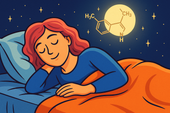
Melatonin and Menopause: Restoring Your Sleep Cycle
Nutrients are the foundation of hormone balance and energy. Learn how vitamins, minerals, and whole foods like greens, salmon, and berries nourish women’s bodies during menopause and beyond — restoring vitality, mood, and strength. 🌿🥗
-
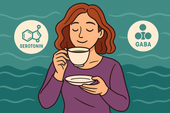
How L-Theanine Helps With Menopausal Anxiety
Science continually deepens our understanding of the human body, from hormones to neurotransmitters. Discover how evidence-based research shapes modern wellness — bridging natural medicine, neuroscience, and hormone balance for healthier living. 🔬🌿
-

Can Ginkgo Biloba Improve Memory in Menopausal Women?
Hormone therapy can be a powerful tool for easing menopause symptoms and restoring balance. Learn how it works, the types available, and how to combine it safely with lifestyle and natural support for optimal well-being. 🌸💊
-
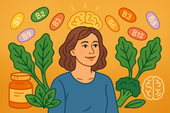
B Vitamins for Mental Clarity During Menopause
Nutrients are the foundation of mental and physical balance during menopause. Discover how vitamins, minerals, and whole foods like leafy greens, fish, nuts, and citrus can fuel energy, clarity, and calm while supporting hormonal health. 🌿✨
-
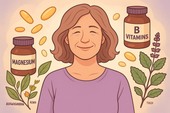
Mood Swings and Menopause: Natural Nutrient Support
Probiotics do more than support digestion — they help balance mood, hormones, and immunity too. Learn how a healthy gut microbiome can ease menopause symptoms, boost energy, and improve emotional resilience naturally. 🌿🦠
-
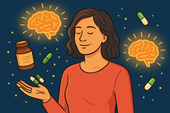
Brain Fog in Menopause: Supplements That May Help
Supplements can be powerful allies in restoring balance, energy, and focus—especially during menopause. Learn how nutrients like omega-3s, vitamin D, magnesium, and herbal adaptogens work together to support brain health, reduce stress, and promote lasting vitality. 🌿💊
-

Adaptogen Stacks for Reducing Night Sweats
Hormone detox isn’t about cleansing your body—it’s about restoring flow. Learn how the liver, gut, and endocrine systems work together to eliminate hormone buildup and how herbs like milk thistle, dandelion, and schisandra support balance, clarity, and natural vitality. 🌿💫
-
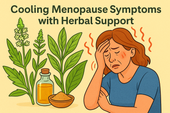
Cooling Menopause Symptoms with Herbal Support
Ashwagandha is one of nature’s most powerful adaptogens, helping women manage stress, sleep better, and balance hormones naturally. Discover how this ancient root supports calm energy, emotional resilience, and relief from menopause-related anxiety and fatigue. 🌿💫
-

Evening Primrose Oil and Menopause: What the Research Says
Hot flashes are one of the most common—and frustrating—symptoms of menopause. Discover what causes them, why the body’s “internal thermostat” becomes unbalanced, and the natural supplements and lifestyle shifts that can help you cool down, rest better, and feel more in control. 🔥💧
-

How Black Cohosh Helps with Menopausal Symptoms
Sleep disturbances are among the most exhausting symptoms of menopause—but they don’t have to rule your nights. Discover how natural strategies and calming supplements can help you fall asleep faster, stay asleep longer, and wake up feeling truly restored. 🌙💤
-

Natural Supplements That May Reduce Hot Flashes
Hot flashes can disrupt sleep, confidence, and daily comfort—but natural relief is possible. Discover the best research-backed supplements like black cohosh, red clover, and licorice root that may reduce hot flashes, balance hormones, and restore inner calm during menopause. 🌿💫
-

Omega-3s and Menopause: Supporting Mood and Inflammation
Omega-3 fatty acids are essential for hormonal harmony, brain function, and emotional balance—especially during menopause. Learn how these healthy fats reduce inflammation, support heart health, and restore calm, vitality, and focus through every stage of midlife. 🌊💫
-

The Role of Vitamin D in Menopausal Health
Vitamin D plays a powerful role in menopausal health—supporting bone strength, hormone balance, and mood stability. Discover how optimizing your vitamin D levels can improve sleep, energy, and emotional well-being while protecting long-term vitality through every stage of menopause. 🌞💪
-
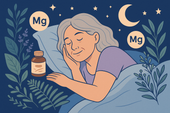
Magnesium for Menopause: Relaxation, Sleep, and Hormonal Support
Self-regulation is the art of staying calm, centered, and in control—no matter what life throws your way. Learn how to strengthen emotional balance, manage stress responses, and cultivate inner peace through mindful techniques that reconnect your heart, body, and brain. 🌿💫
-

Can Adaptogens Like Ashwagandha Ease Menopausal Symptoms?
Brain fog during menopause can make even simple tasks feel overwhelming—but you’re not losing your sharpness, your hormones are simply shifting. Discover how adaptogens like ashwagandha and key nutrients can restore mental clarity, balance cortisol, and bring calm focus back to your day. 🌿🧠
-

Supplements That Support Hormonal Balance During Menopause
Herbal supplements have supported women’s health for centuries—and modern science is finally catching up. From ashwagandha and maca to red clover and rhodiola, discover how nature’s most trusted herbs can calm stress, balance hormones, and enhance energy through every life stage. 🌿✨
-
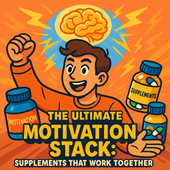
The Ultimate Motivation Stack: Supplements That Work Together
Discover how therapy helps restore motivation, focus, and emotional balance alongside supplement and mindset strategies. This empowering article explores how addressing thought patterns and emotional blocks through therapy can complement biochemical tools for long-term drive and well-being. 🧠💬
-

Entrepreneurial Drive: Can Supplements Help You Avoid Burnout?
Entrepreneurship demands energy, creativity, and mental resilience—but without balance, it leads to burnout. This in-depth article explores how nootropic supplements, adaptogens, and mindset tools can help entrepreneurs sustain motivation, manage stress, and keep their drive sharp for the long haul. 🚀💼
-
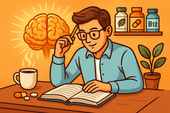
Supplements for Students: Staying Motivated Through Exams
Feeling burned out before finals? Discover how the right supplements can help students stay focused, calm, and motivated through exam season. This guide explores science-backed nutrients, brain-boosting herbs, and mindset tools that fuel clarity, memory, and stress resilience when it matters most. 🎓⚡
-
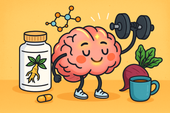
Natural Pre-Workout Supplements for Motivation and Mental Sharpness
Adaptogens are nature’s stress balancers 🌿 — powerful herbs like Ashwagandha, Rhodiola, and Holy Basil that help your body stay calm, focused, and resilient. By regulating cortisol and supporting energy balance, they boost motivation, endurance, and emotional stability — naturally. 🌞🧠
-
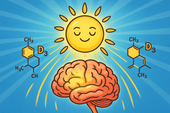
The Role of Vitamin D in Mental Drive and Ambition
Motivation is more than mindset — it’s energy in motion ⚡🧠. It comes from a balance of biology, emotion, and purpose. When your brain, body, and habits align, drive becomes effortless. Learn how to spark consistency, overcome dips, and build unstoppable momentum naturally. 🌿✨
-
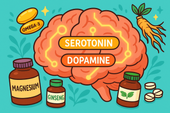
Serotonin, Dopamine, and Motivation: Can Supplements Really Help?
Ginseng is the ultimate vitality root 🌿⚡ — long praised for enhancing focus, energy, and motivation without the crash. By balancing stress hormones, boosting dopamine, and improving brain oxygenation, this adaptogenic powerhouse helps you feel clear, strong, and ready to take action. 🧠✨
-
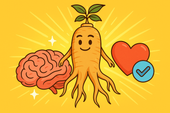
How Ginseng Helps Support Drive, Motivation, and Energy
Ginseng is nature’s endurance root 🌿⚡ — a timeless adaptogen that fuels focus, drive, and resilience from the inside out. By balancing cortisol, boosting dopamine, and supporting mitochondrial energy, ginseng helps you feel clear, strong, and steady — no crash, just sustainable vitality. 🧠✨
-
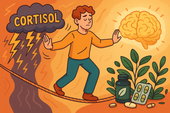
The Stress–Motivation Connection: Supplements That Balance Cortisol
Vitamin D — the “sunshine nutrient” ☀️ — plays a crucial role in mental health, motivation, and energy regulation. Low levels can lead to fatigue, low mood, and sluggish focus. Learn how sunlight, nutrition, and supplementation can restore your inner light and boost emotional balance naturally. 🌿🧠
-

When Low Mood Drains Your Drive: Natural Support Options
Vitamin D is more than the “sunshine vitamin” ☀️ — it’s a key player in mood, motivation, and overall brain health. Low levels can lead to fatigue, low drive, and seasonal sadness. Learn how sunlight, supplements, and nutrition can help restore balance and lift your emotional energy naturally. 🌿🧠
-
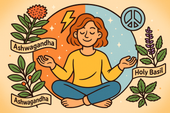
How Adaptogenic Herbs Help You Stay Consistent
Adaptogens are nature’s resilience enhancers 🌿. From Ashwagandha to Rhodiola and Holy Basil, these herbs help your body adapt to stress, balance cortisol, and maintain steady energy. Learn how they build inner stability — keeping your focus, mood, and motivation consistent through life’s ups and downs. ⚡🧘
-
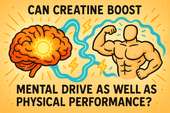
Can Creatine Boost Mental Drive as Well as Physical Performance?
IQ, or intelligence quotient, measures more than problem-solving — it reflects how efficiently your brain processes, adapts, and connects ideas 🧠⚡. While genetics play a role, lifestyle, nutrition, and brain health all influence cognitive performance. Learn how to support mental sharpness and cognitive growth naturally. 🌿✨
-
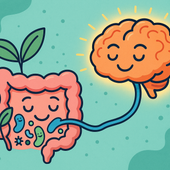
The Link Between Gut Health and Motivation: Probiotics Explained
Serotonin — the “feel-good” neurotransmitter 🌞 — plays a powerful role in mood, motivation, and overall emotional balance. Produced mostly in the gut, it connects digestion, happiness, and focus through the gut-brain axis. Learn how to naturally support serotonin for calmer energy and lasting motivation. 🌿✨
-
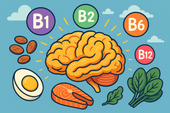
How B Vitamins Fuel Motivation and Energy at the Cellular Level
B vitamins are the body’s natural energy engines ⚡. They convert food into fuel, support dopamine for motivation, and power brain cells at the mitochondrial level. From B1 to B12, these nutrients help you stay focused, resilient, and full of drive — every single day. 🌿🧠
-
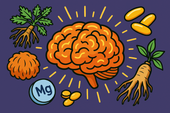
Supplements That Support Mental Endurance for Long Projects
Mindset is more than motivation — it’s the mental framework that shapes how you respond to challenges and pursue goals 🌿🧠. A growth mindset turns obstacles into opportunities, while a fixed mindset fuels self-doubt. Learn the science behind mental resilience and how to cultivate a mindset that sustains focus, creativity, and long-term success. ✨
-
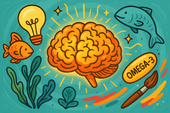
How Omega-3s Influence Drive, Creativity, and Problem-Solving
Sleep isn’t just rest — it’s the foundation of mental clarity, emotional balance, and motivation 🌙💤. During deep sleep, your brain resets stress hormones, consolidates memory, and clears away mental fog. Learn how better sleep supports neuroplasticity, creativity, and lasting energy for your day. 🌿✨
-
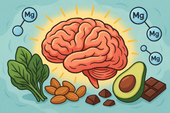
Can Magnesium Improve Your Focus and Motivation?
Caffeine is the world’s favorite stimulant ☕ — boosting alertness, sharpening focus, and lifting motivation within minutes. But there’s real science behind that morning cup. Learn how caffeine works on adenosine and dopamine, how to avoid the crash, and how to use it strategically for sustained energy and mental performance. ⚡🧠
-
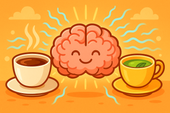
The Role of L-Theanine and Caffeine in Daily Motivation
Cortisol — often called the “stress hormone” — is both your alarm system and your reset button ⚡. It keeps you alert in the morning and helps you recover after challenges, but when it stays high too long, it drains your mood and energy. Learn how to balance cortisol naturally for steady focus, calm, and motivation. 🌿
-
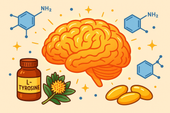
Supplements That Support Dopamine for Drive and Reward
Curcumin — the golden compound in turmeric — is more than a spice 🌿✨. It’s a powerful anti-inflammatory that protects dopamine neurons, supports brain clarity, and enhances mood. Learn how curcumin’s antioxidant properties help stabilize energy, reduce brain fog, and promote emotional resilience naturally. 🌼
-
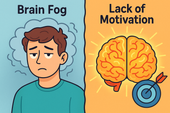
Brain Fog vs Lack of Motivation: What’s Really Holding You Back?
Hormones are the body’s invisible messengers — shaping energy, mood, focus, and motivation 🧠🌿. When they’re balanced, you feel clear, confident, and emotionally steady. Learn how key hormones like cortisol, serotonin, dopamine, and estrogen interact to influence your mental well-being and what you can do to keep them in harmony naturally. ✨
-
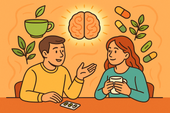
Supplements for Staying Collected During Disagreements
Science helps us understand why we feel, react, and change 🌿🧠. From brain chemistry to neurotransmitters and hormones, every emotional response has a biological root. Explore how research in neuroscience and psychology reveals practical ways to stay balanced, focused, and emotionally strong in daily life. 🔬✨
-

Managing Anger While Traveling
Supplements can help calm your nervous system and keep your emotions balanced while on the go 🌿. From magnesium and ashwagandha to L-theanine and omega-3s, learn how natural nutrients support stress resilience, focus, and emotional control — even through long flights, delays, and unpredictable travel days. ✈️
-
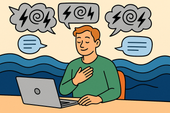
How to Keep Your Temper in Online Debates
Supplements can do more than fill nutritional gaps — they can help balance your energy, focus, and stress response naturally 🌿. From adaptogens to amino acids, the right nutrients support your brain chemistry and hormonal harmony for calm, steady productivity. Discover how supplements can build long-term resilience without the crash. ⚡🧠
-

Supplements to Stay Calm Before Public Speaking
Breathwork is one of the simplest yet most powerful tools for calming pre-performance stress 🌬️. By slowing and deepening your breathing, you lower cortisol, steady your heartbeat, and re-center your mind. Learn the science behind how controlled breathing activates your parasympathetic nervous system — helping you speak, perform, or focus with grounded confidence. 🌿
-

How to Handle Customer Service Stress Without Losing Your Cool 💬🧘♀️
Customer service can test even the calmest person’s patience. 😤 Learn how to handle difficult clients and daily pressure without losing your cool — through better mindset management, calming breathwork, and practical communication tools. Stay grounded, protect your energy, and transform stress into strength. 🌿
-
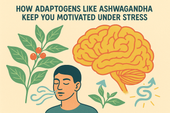
How Adaptogens Like Ashwagandha Keep You Motivated Under Stress
Feeling overwhelmed and unmotivated? 🌿 Discover how adaptogens like Ashwagandha can help you stay centered, focused, and energized under stress. Learn how supplements, breathwork, and therapy work together to restore your natural motivation and help you thrive — even during life’s toughest moments. 💪✨
-
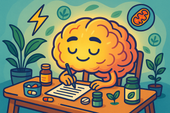
Supplements That Support Long-Term Productivity Without the Crash ⚡🌿
Cortisol — your body’s main stress hormone — can be both your best friend and worst enemy. ⚡ When balanced, it keeps you focused, energized, and ready to act. But when it stays high for too long, it leads to fatigue, anxiety, and emotional crashes. Learn how to regulate cortisol naturally through supplements, sleep, and stress management to maintain calm, steady productivity. 🌿
-
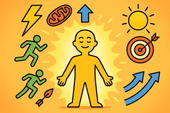
Why Energy Levels and Motivation Go Hand in Hand ⚡🧠
B-vitamins are the brain’s spark plugs 🔋. They turn food into fuel, support neurotransmitter production, and keep your mood, energy, and focus balanced. Learn how vitamins like B6, B9, and B12 work together to power the nervous system, reduce fatigue, and keep motivation high. 🌿
-
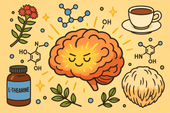
The Science of Motivation: Can Nootropics Help You Stay Focused? 🧠⚡
Nootropics are nature’s tools for sharper thinking and sustainable focus 🧠🌿. From Rhodiola and Lion’s Mane to L-theanine and Bacopa, these brain-boosting compounds enhance motivation, memory, and stress resilience. Learn the science behind how nootropics work — and how to use them safely for peak mental performance and clarity. ⚡
-
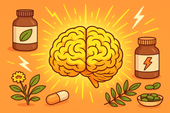
How Natural Supplements Can Boost Your Daily Drive
Cortisol is your body’s main stress hormone — powerful, necessary, but often misunderstood. ⚡ When balanced, it keeps you alert and energized; when chronically elevated, it drains mood, motivation, and focus. Learn how to regulate cortisol naturally through nutrition, supplements, and calming lifestyle habits for steady energy and emotional balance. 🌿
-
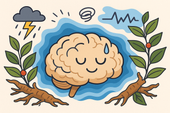
Ashwagandha for Stress and Low Mood
Breathwork is more than a relaxation tool — it’s a way to rewire your nervous system. 🌬️ Through intentional breathing, you can reduce stress hormones, improve focus, and calm emotional turbulence. This guide explores the science of breathwork and its powerful effects on mental clarity, resilience, and emotional regulation. 🌿
-
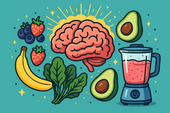
Mood-Boosting Smoothie Recipes
Your blood sugar affects far more than energy — it influences mood, focus, and emotional stability too 🍎. Learn how maintaining balanced glucose levels supports brain health, reduces anxiety, and prevents emotional crashes. Discover the foods and habits that keep your mind calm and your energy steady throughout the day. 🌿
-
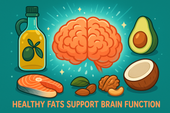
How Healthy Fats Support Brain Function
Your brain thrives on healthy fats 🧠💧. From omega-3s to MCTs, the right fats enhance focus, memory, and mood while protecting against inflammation and aging. This article explores how good fats — like those from olive oil, salmon, avocado, and nuts — build sharper thinking, emotional balance, and lasting brain vitality. 🌿
-
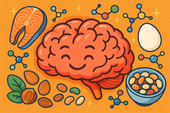
The Role of Protein in Mental Clarity
Protein isn’t just for muscles — it’s for your mind. 🧠 This guide explores how amino acids from high-quality protein fuel neurotransmitters, stabilize mood, and sharpen focus. Learn how balanced protein intake supports dopamine, serotonin, and energy regulation to boost mental clarity and emotional stability naturally. 🍳🌿

















































